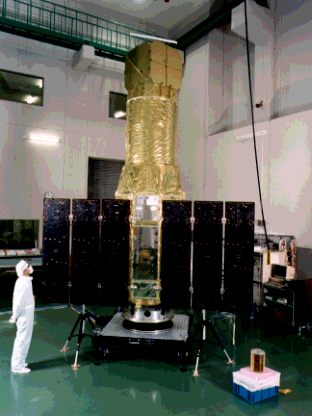|
|
ASCA, a model of international collaboration
ISAS is the central research institute for space and astronautical science
in Japan; more practical and/or commercial uses of space (weather and
communication satellites, for example) are the domain of a separate space
agency, NASDA. ISAS has been launching scientific satellites since 1970,
at a rate of roughly one satellite per year. X-ray
astronomy has
become one of the major research areas for ISAS, with the successful launches
of Hakucho (1979), Tenma (1983), and Ginga (1987).

Even with such a strong tradition and a large accumulation of
expertise at ISAS and at several major Japanese universities, they felt
they could benefit greatly from an international collaboration for
their 4th X-ray astronomy satellite, in this case with the US.
This was partly due to the sheer increase in complexity and
sophistication of the satellite they hoped to build. Additionally,
there were specific areas in which the US had a clear lead over Japan.
By forging a collaboration between US and Japanese groups, they hoped
to create new centers of expertise in several new areas.
From the US point of view, the collaboration with ISAS provided an
opportunity to participate in a mission that would develop and utilized
new technology in a timely manner. Although the launch capabilities of
ISAS rockets are modest, they have been reliable; ISAS also has an
unparalleled reputation for on-time completion of their projects.
On the other hand, NASA had temporarily gotten away from regular
launch opportunities for small and medium sized satellites, during
the '80s and the early '90s.
NASA's contribution to ASCA has been in the conical foil X-ray mirrors,
in the X-ray CCD cameras, and in software. In return, US scientists
have enjoyed access to 40 % of observing time on ASCA; 15 % of the total
observing time is reserved for the exclusive use of the US guest observers,
and an additional 25 % of time is earmarked for collaborative US-Japanese
observations. The latter block of time has successfully fostered many
collaborations among scientists from the US and Japan.
|
